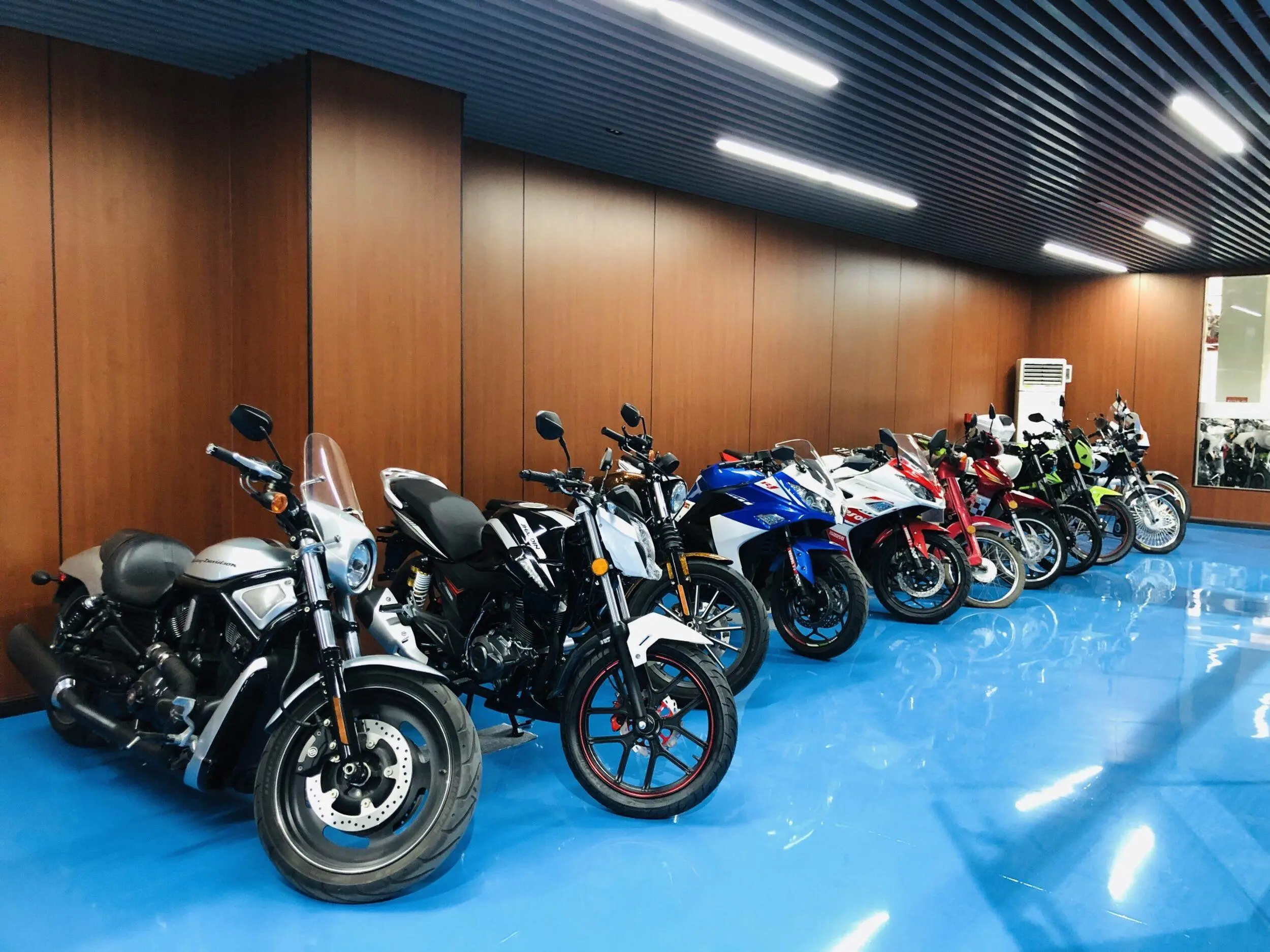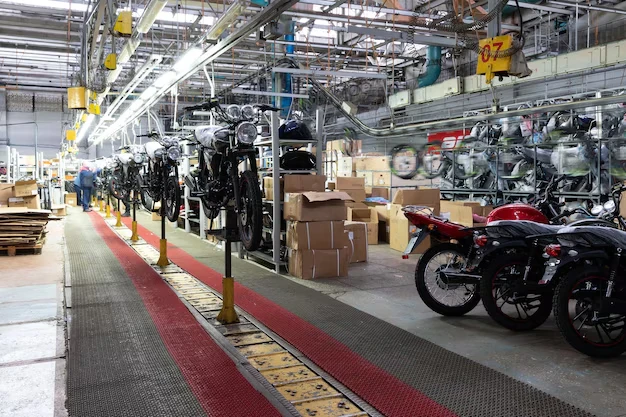The decision to buy a motorcycle is rarely a purely logical one. It is born from a desire for freedom, a passion for adventure, and the allure of the open road. However, translating that dream into a tangible reality sitting in your driveway requires a structured and informed approach. The process can seem overwhelming, with a vast market of styles, sizes, and options. This comprehensive guide is designed to be your trusted roadmap, navigating you through every phase of the purchasing journey, from initial research to the final handshake. As a professional manufacturer with a deep-rooted commitment to quality and rider satisfaction, ZUKIDA is here to ensure your first step into the world of motorcycling is a confident and rewarding one.
Phase 1: Preparation and In-Depth Research
Before you even step into a dealership or browse an online listing, the most crucial work begins. This foundational phase is about understanding your own needs, setting realistic expectations, and building a base of knowledge that will empower you to make the best possible choice.
Step 1: A Realistic Self-Assessment
The perfect motorcycle for one person can be entirely wrong for another. The first step is to look inward and honestly assess your own circumstances and goals.
- Your Experience Level: Are you a complete novice who has never operated a clutch, or do you have years of riding experience? Be honest. Starting on a machine that is too powerful is one of the most common and dangerous mistakes a new rider can make. A forgiving, manageable bike is the best tool for building skills and confidence.
- Your Primary Riding Purpose: How will you use this motorcycle 90% of the time?
- Daily Commuting: Your priorities will be fuel efficiency, comfort in traffic, reliability, and perhaps weather protection. A standard bike, scooter, or small-displacement cruiser would be ideal.
- Long-Distance Touring: Comfort is king. You will need a bike with excellent ergonomics, wind protection, luggage capacity, and a larger engine for effortless highway travel.
- Weekend Fun & Canyon Carving: You are looking for agility, performance, and a thrilling experience. A sport bike or a performance-oriented standard bike would be a great fit.
- Off-Road Exploration: If your adventures involve dirt, gravel, or trails, you need a dual-sport or adventure motorcycle with the right suspension and tires for the job.
- Physical Considerations: Motorcycles are not one-size-fits-all. Consider your height, inseam, and physical strength. A crucial factor for new riders is being able to place their feet firmly on the ground when stopped. A bike that feels too heavy or tall in the showroom will be a handful in a real-world, low-speed situation.
Step 2: Setting a Comprehensive Budget
One of the biggest mistakes buyers make is only budgeting for the sticker price of the motorcycle. The Total Cost of Ownership (TCO) is a much more realistic figure to consider.
- The Purchase Price: This is the starting point. How much do motorcycles cost? A new, small-displacement bike from a reputable manufacturer like ZUKIDA can be very affordable, while high-end touring or sport bikes can cost as much as a new car.
- Essential Riding Gear: This is a non-negotiable part of your budget. Factor in the cost of a high-quality, certified helmet, an armored riding jacket, riding gloves, durable pants, and over-the-ankle boots. Skimping on gear is a risk you cannot afford to take.
- Insurance: Get insurance quotes before you buy. The cost can vary dramatically based on the bike’s type (sport bikes are the most expensive to insure), engine size, your age, your driving record, and your location.
- Taxes, Title, and Registration: These government fees can add a significant amount to the final price, often 5-10% of the purchase cost, depending on your region.
- Initial Maintenance and Accessories: A new bike will have its first service interval coming up quickly. A used bike might need an immediate oil change, new tires, or a chain and sprocket set. You may also want to add accessories like frame sliders, a luggage rack, or a phone mount.
Step 3: The Big Decision – New vs. Used
This is a major fork in the road, with compelling arguments for both paths.
The Case for a New Motorcycle
Buying a new motorcycle, such as one from ZUKIDA’s state-of-the-art manufacturing facility, offers undeniable peace of mind.
- Full Manufacturer’s Warranty: This is the biggest advantage. If any covered part fails within the warranty period, the repair is handled at no cost to you.
- Pristine Condition: You are the first owner. There are no hidden histories, no previous owner’s questionable modifications, and no worries about deferred maintenance.
- Latest Technology: New bikes come with the latest advancements in safety and performance, such as ABS, fuel injection, and improved efficiency.
- Dealer Support: You are building a relationship with a local dealer who can handle service, parts, and future needs.

The Case for a Used Motorcycle
A used bike can be an incredibly smart financial choice, especially for a first-time rider.
- Lower Initial Cost: The most obvious benefit. You can get “more bike for your money” by buying a model that is a few years old.
- Less Depreciation: A new motorcycle’s value drops most significantly in its first couple of years. A used bike has already taken that biggest hit.
- Less Worry: A minor tip-over or scratch on a used bike is far less heartbreaking than on a brand-new machine, which can make the learning process less stressful.
Phase 2: The Search and Meticulous Inspection
With your research done and budget set, it’s time to find your machine. This phase is about careful examination and trusting your instincts.
Step 4: Where to Buy Your Motorcycle
- Authorized Motorcycle Dealers: The best place to buy a new motorcycle. They offer financing, handle all the paperwork, and provide ongoing support. Many also sell certified pre-owned bikes that have been inspected and serviced.
- Private Sellers: This is where you’ll often find the best deals on used bikes. However, the onus is on you to inspect the bike thoroughly and handle all paperwork correctly. It requires more effort but can have a high reward.
- Online Marketplaces & Motorcycle Traders: These platforms offer a vast selection but require caution. Be wary of deals that seem too good to be true and always arrange to see the motorcycle in person before any money changes hands.
Step 5: The Pre-Inspection Checklist
When you go to see a used motorcycle, go armed with a flashlight and a checklist. A cold engine is a must, as it can reveal starting issues that a warm engine might hide.
Paperwork and Frame
- Check the VIN: Ensure the Vehicle Identification Number (VIN) on the steering head and the frame matches the number on the title.
- Examine the Title: Check for any branding like “salvage” or “rebuilt,” which indicates a history of severe damage.
Engine and Fluids
- Leaks: Look for any oil or coolant drips under the engine. Check around gaskets and seals for any signs of weeping.
- Oil: Check the oil level and condition through the sight glass or on the dipstick. Milky-looking oil could indicate a serious internal engine issue.
- Coolant: On liquid-cooled bikes, check the coolant level in the reservoir.
Drivetrain, Wheels, and Tires
- Chain & Sprockets: The chain should be clean and properly tensioned. Look at the sprocket teeth; if they are hooked or look like shark fins, they need to be replaced.
- Tires: Check the tread depth. Look for a four-digit date code on the tire sidewall (e.g., “3221” means the 32nd week of 2021). Tires older than 5-7 years should be replaced regardless of tread depth.
Brakes, Suspension, and Electrics
- Brakes: Check the thickness of the brake pads and the condition of the rotors. Squeeze the brake lever to ensure it feels firm, not spongy.
- Suspension: Push down hard on the front and rear of the bike. The suspension should compress smoothly and rebound in a controlled manner. Look for any oil leaking from the front fork seals.
- Lights and Controls: Turn the key and test everything: headlights (high and low beam), turn signals, brake lights (both front and rear brakes), horn, and starter button.
Step 6: The All-Important Test Ride
If the visual inspection passes, it’s time for a test ride. This is where you will learn the most about the bike’s true condition.
- Clutch and Transmission: The clutch lever should pull in smoothly. The bike should shift cleanly through all gears without clunking or slipping. Finding neutral should be relatively easy.
- Engine Performance: The engine should accelerate smoothly without hesitation or sputtering. Listen for any unusual noises.
- Brakes: In a safe, open area, test the brakes. They should provide strong, confident stopping power without pulsing or squealing.
- Handling and Ergonomics: Does the bike turn in easily? Does it feel stable in a straight line? Most importantly, do you feel comfortable with the handlebar and footpeg positions?
Phase 3: Finalizing the Deal and Taking Ownership
You’ve found the one. The bike checks out, and the test ride was a success. Now it’s time to make it yours.
- Negotiation: Use any issues you found during your inspection (e.g., worn tires, an old chain) as fair points for negotiation. Be polite but firm, and be prepared to walk away if you cannot agree on a price.
- Payment and Paperwork: For private sales, use a secure payment method like a cashier’s check. Never carry large amounts of cash. Fill out a Bill of Sale that includes the date, price, VIN, and names/signatures of both buyer and seller.
- Title Transfer: This is the most critical step. Ensure the seller properly signs the title over to you. Do not leave without the physical title in your hand.
- Getting it Home: If you are an experienced rider and the bike is insured, riding it home is an option. For new riders, it’s often safer and wiser to arrange for transport via a trailer or a professional motorcycle shipping service.
Conclusion: The Journey Begins
Buying a motorcycle is a significant undertaking, but by approaching it with diligence and knowledge, you can transform a daunting process into an exciting and rewarding experience. This guide provides the framework, but the final decision rests on the machine that fits your budget, meets your needs, and, most importantly, speaks to your spirit of adventure. At ZUKIDA, we stand behind this journey by building high-quality, reliable, and accessible motorcycles that serve as the perfect starting point for a lifetime of riding. Our commitment to cutting-edge manufacturing and responsive customer support ensures that when you choose a ZUKIDA, you’re not just buying a motorcycle—you’re joining a global family of riders. Welcome to the community.


15 thoughts on “From Dream to Driveway: The Ultimate Guide to Buying a Motorcycle”
Regarding topic, have you considered how this affects the upcoming Euro 5 regulations? Cheers.
Detailed guide on topic. A video tutorial would be a great addition for our mechanics. Ride safe.
Excellent write-up. topic is indeed a major factor when clients choose a supplier. Looking forward to the next update.
This analysis of topic aligns perfectly with what we are seeing in the Southeast Asian market.
We appreciate Zukida sharing knowledge about topic. It builds trust for long-term cooperation.
We appreciate Zukida sharing knowledge about topic. It builds trust for long-term cooperation.
Very informative post on topic. Keep up the good work with the blog content. Best regards from our team.
The points you raised about topic are valid. The motorcycle industry needs more transparency like this.
Good read about topic. Do you have more detailed specs or PDFs available for download?
The points you raised about topic are valid. The motorcycle industry needs more transparency like this. Ride safe.